- Home
- TV History
- Network Studios History
- Cameras
- Archives
- Viewseum
- About / Comments
Skip to content
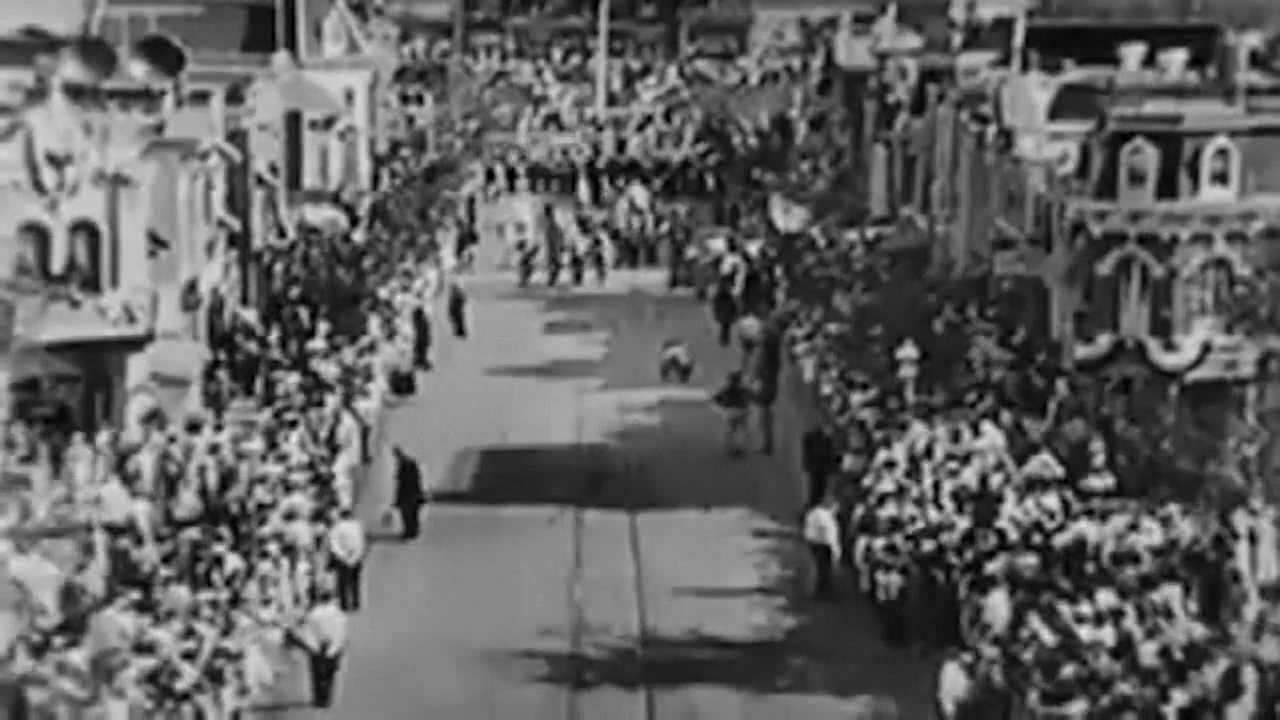

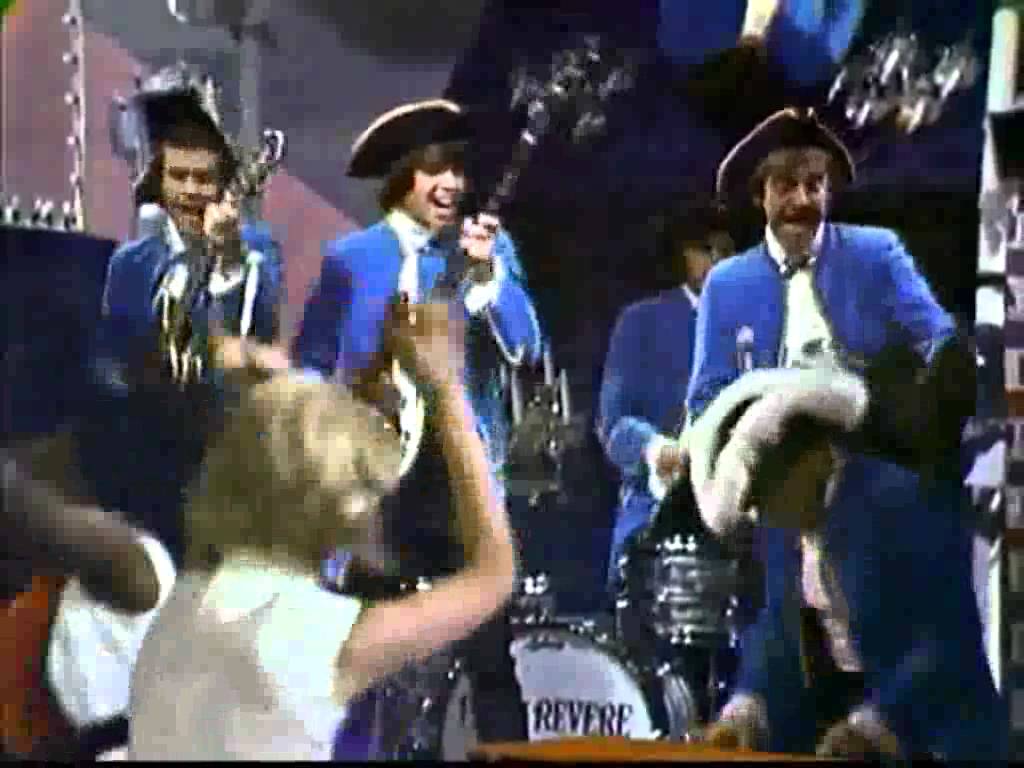

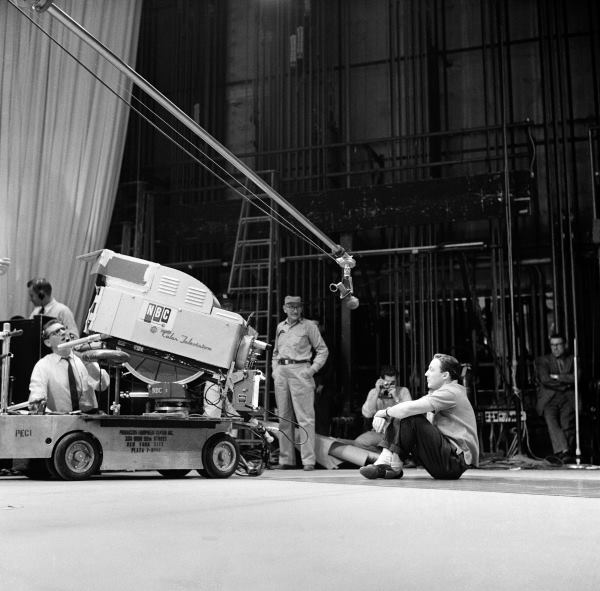

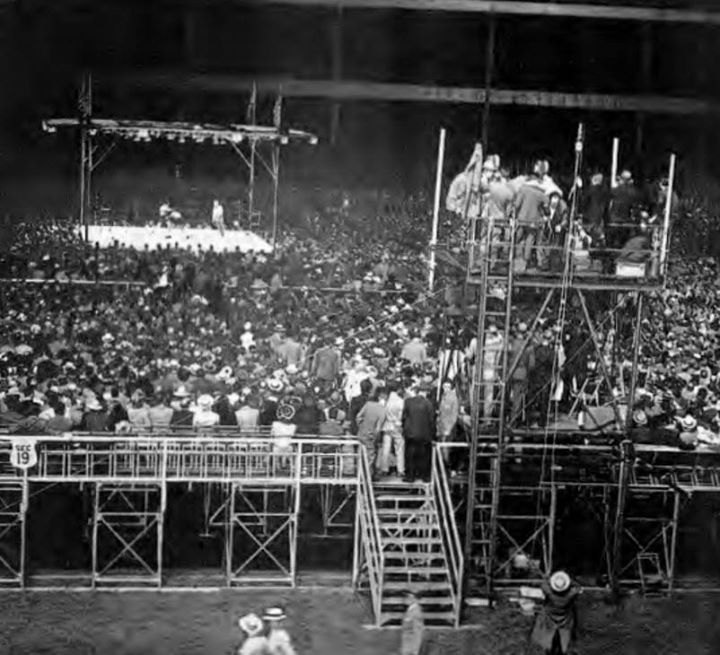



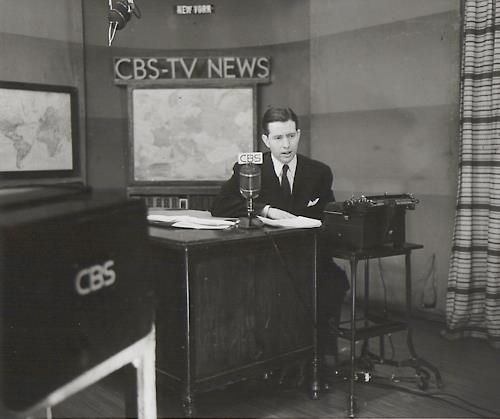

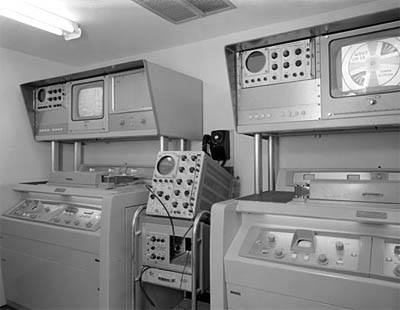

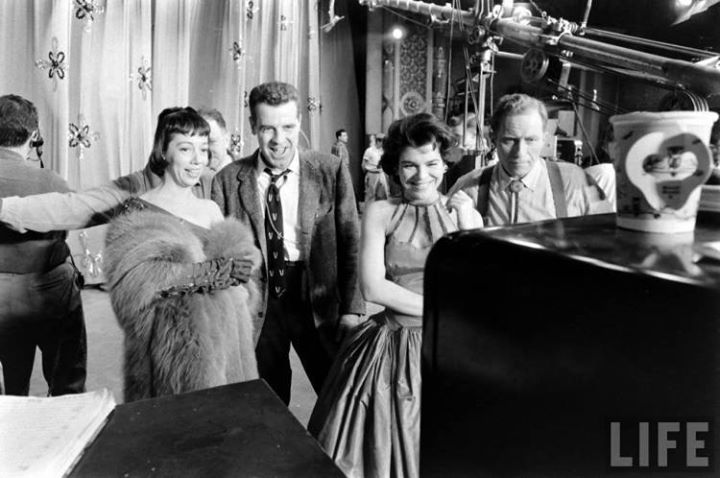

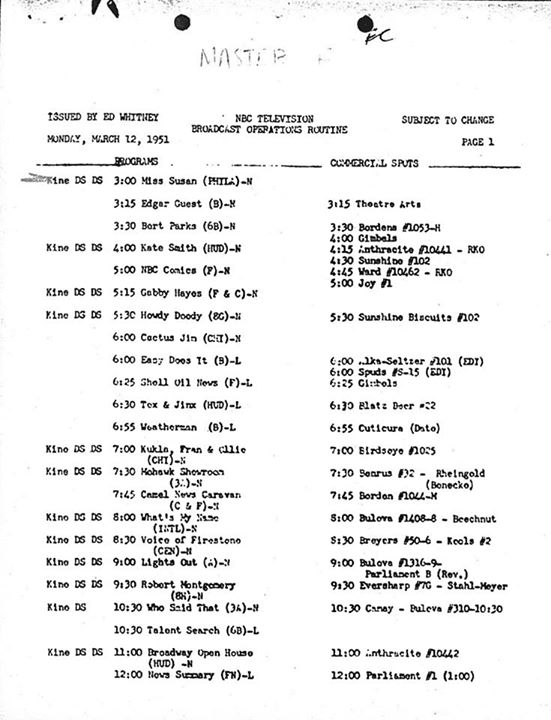

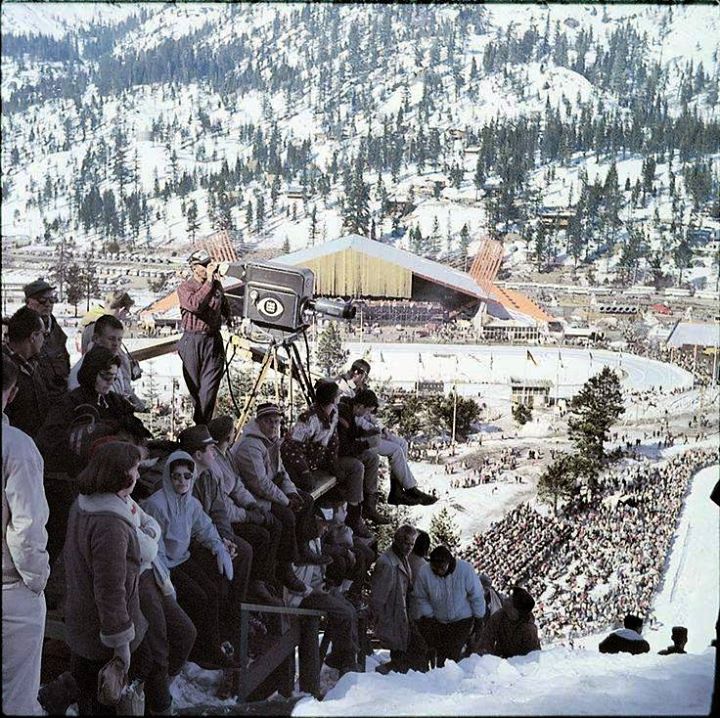

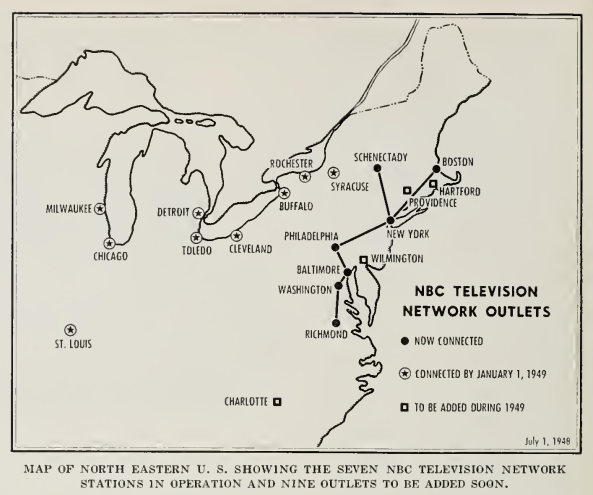



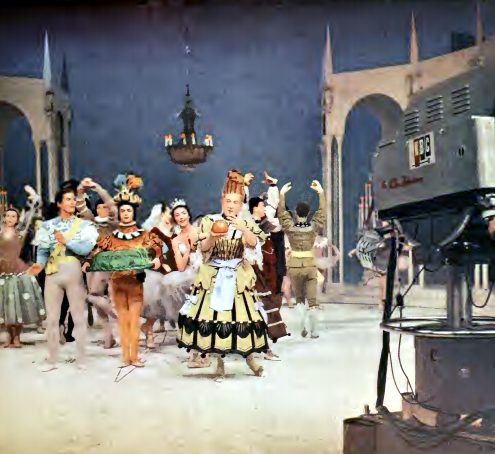

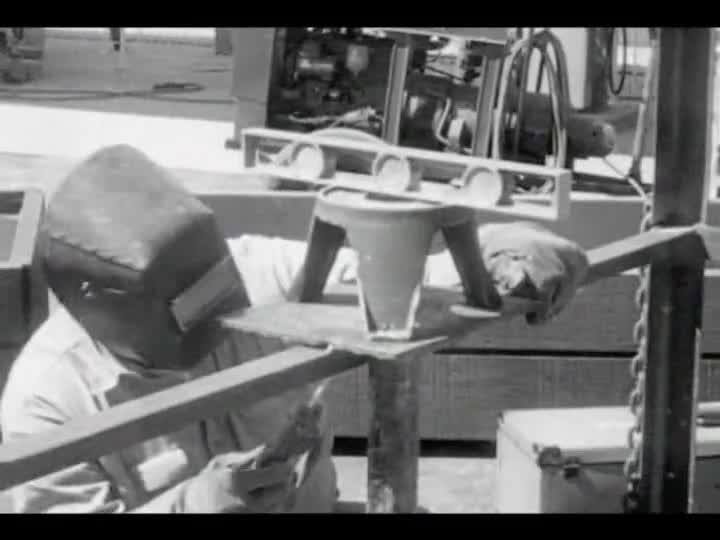

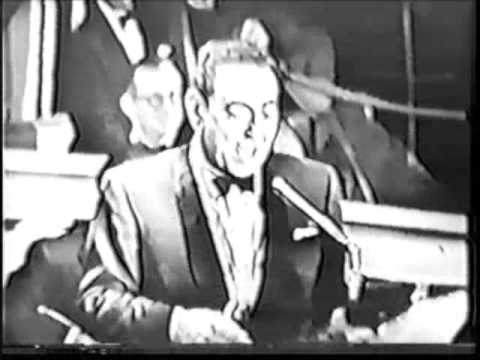

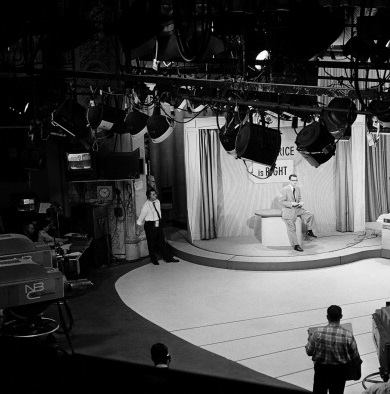



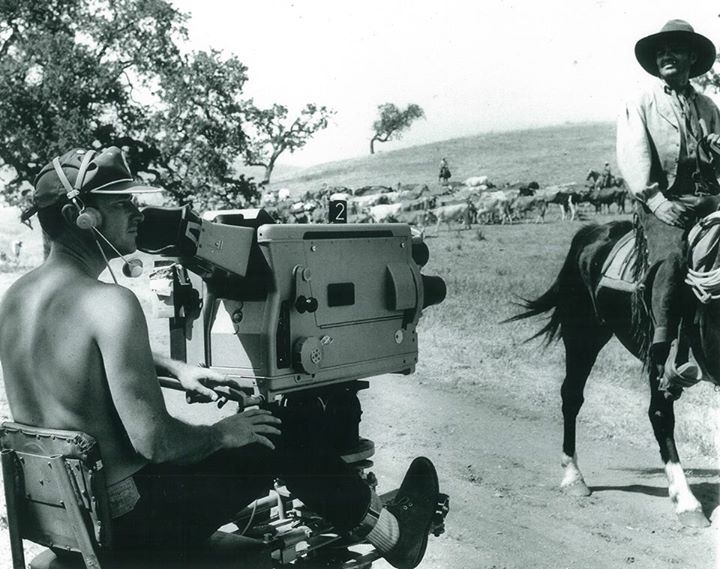





Search Results for: kinescope


1955 Disneyland Opening Day [Complete ABC Broadcast]
On June 1, 2014
- TV History
Disneyland Opening Day, As Seen Live On ABC…July 18, 1955
In today’s first post, we saw the preparation for this event and this video starts where that one ended…with Art Linkletter’s welcome. At the 2:00 mark, Art describes the previous day’s rehearsal as something like “trying to cover three erupting volcanos without expecting any of them”. No truer words have ever been spoken!
He splits the 90 minute program’s hosting duties with Bob Cumming and in the last 15 minutes or so, you can tell that they are running out of time and one area had to be passed over. This is the full presentation via kinescope and without the commercials. Enjoy and share!


Rare! ‘Hullabaloo’ Color Footage…November 29, 1965
On May 31, 2014
- TV History
Rare! ‘Hullabaloo’ Color Footage…November 29, 1965
This was done in NBC Burbank’s Studio 1 with ‘Bonanza’ star Michael Landon as host and, sometimes, Go Go dancer. ‘Hullabaloo’ began as a half hour in black and white on January 12, 1965 and the first season ended August 31, 1965.
The second season brought an hour long color show that ran from September 13, 1965 till August 29, 1966. Only a few episodes have survived in color. All the rest of the episodes, including the first season, have survived only as black and white kinescopes. This is because NBC destroyed the tapes in the 1970s once Smith-Hemion Productions turned down the offer to take them into their possession. A sadly familiar story.
This is the show’s close, complete with credits and Johnny Holiday announcing. Paul Revere And The Raiders close out a the show that had featured The Byrds, Jackie DeShannon and David Winters.
#t=196″ target=”_blank”>https://www.youtube.com/watch?v=1lohb-4Gc-I #t=196
Lyrics: http://easylyrics.org/?artist=Paul+Revere+And+The+Raiders&title=Steppin%27+Out Thanks for checking out our videos and site!
December 21, 1958…’Dancing: A Man’s Game’ With Gene Kelly
On May 22, 2014
- TV History
December 21, 1958…’Dancing: A Man’s Game’ With Gene Kelly
NBC’s great ‘Omnibus’ program, which I remember well, was a wide ranging show that on one Sunday afternoon included a half hour segment conceived, written and narrated by Gene Kelly.
Assisted by the top names in sport, like Mickey Mantle, Sugar Ray Robinson and Johnny Unitas, Kelly sets out to demonstrate the rhythm and coordination required of great athletes. He also traces the history of modern American dance, and sets out to prove that dancing is, not the property of women but that, rightfully, it’s “a man’s game.”
The show was done at NBC Brooklyn and the cameraman in the black and white photo is Don Mulvaney (who by the way was also the main crane cameraman on Perry Como and the original crane cameraman on ‘Saturday Night Live’). The color photo is from another scene in the show.
At the clip is one of the only known pieces of the kinescope of the show. Enjoy and share!
June 19, 1946…The debut of the RCA TK30s…
On May 19, 2014
- Archives, TV History
The debut of the RCA TK30 Image Orthicon camera was live in half of the nation and on kinescope for the rest, so this better be good! And it was! This was trial by fire.
RCA worked so fast to get six TK30s to NBC in New York for the Lewis-Conn rematch at Yankee Stadium, the art department didn’t even have time to cut and paste photos of the cameras in their pre fight ads that ran in May of 1946.
In the photos on the right and left, you see the first TK30s ever used anywhere…even on a local NBC NY show. The introduction date was officially set for October of ’46, but the Lewis-Conn rematch was such a big deal that production was moved up to get at least a few in service for the fight. NBC covered the fight on radio and television on the full network. This was television’s first ever coverage of a World Heavyweight Championship bout.
In the RCA ad in the center we see the immediate predecessor to the TK line of Image Orthicon cameras. These are RCA Orthicon cameras…better than Iconoscopes, but still not half the quality of the IO cameras.
Here’s a little history on this Lewis-Conn rematch…one long delayed by WWII. In 1942, Conn beat Tony Zale and had an exhibition with Louis. World War II was at one of its most important moments, however, and both Conn and Louis were called to serve in the Army. Conn went to war and was away from the ring until 1946.
By then, the public was clamoring for a rematch between him and the still world Heavyweight champion Louis. This happened, and on June 19, 1946, Conn returned into the ring, straight into a world Heavyweight championship bout. Before that fight, it was suggested to Louis that Conn might outpoint him because of his hand and foot speed. In a line that would be long-remembered, Louis replied: “He can run, but he can’t hide.” The fight, at Yankee Stadium, was the first televised world Heavyweight championship bout ever, and 146,000 people watched it on TV, also setting a record for the most seen world Heavyweight bout in history. Most people who saw it agreed that both Conn and Louis’ abilities had eroded with their time spent serving in the armed forces, but Louis was able to retain the crown by a knockout in round eight.
Reports on the television coverage were glowing too! These cameras had delivered the clearest, sharpest pictures ever and with four lenses on the turret, were able to offer a never before available range of shots per camera with 24 views of the action.
The NBC Tour & Best Seat At CBS…The Desk Of William S. Paley
On May 5, 2014
- TV History
The NBC Tour & Best Seat At CBS…The Desk Of William S. Paley
Yesterday I finally saw ALL of NBC…top to bottom. It was an incredible six hour stroll through history that ended at The Paley Center For Media which is where the photos below were taken.
This is the desk of CBS founder William S. Paley; a leather topped card table with numbers that marked the place of each player. Paley sat at the #1 position (seen below left), Frank Stanton sat at the #2 position. It’s likely that Fred Friendly of CBS News spent a lot of time at the #3 position.
Who else sat at this table? You name them…Jackie Gleason was probably lured from Dumont at this table. Lucille Ball and Desi Arnaz, Edward R. Murrow, Don Hewitt, Walter Cronkite, Dan Rather, Douglas Edwards, Mike Wallace, Red Skelton, Ed Sullivan and most of the names that are synonymous with CBS have probably sat here at one time or another. This is the true “catbird seat”.
We were able to end our day here because television history’s true protector and conservator was with us. It was a pleasure and honor to have Ron Simon join us for the NBC tour. Ron is the Curator of The Paley Center and since around 1988, has been archiving and collecting kinescopes and video tape of programs that would have otherwise been lost. Thanks to his efforts, thousands and thousands of hours of rare recordings are alive and well…safe for future generations. We all owe Ron and The Paley Center a debt of gratitude for their efforts.
I spent several hours there Saturday watching some of these rare videos, including the fist ever ‘Honyemooners’ episode in which Art Carney played a policeman. His ‘Norton’ character had yet to be created.
While I am on the sad subject of lost footage, here is a story SNL cameraman John Pinto told me at lunch Friday. John had worked at ABC and was hired for SNL’s debut a few months before it started. To keep him occupied till that October 1975 debut, John was assigned a job he still regrets having had to do.
For three months straight, it was his job to bulk erase tapes, most of which happened to be from ‘The Tonight Show’. To quote the announcer at the Hindenburg crash, “Oh, The Humanity!”
Network Television’s First Evening News Anchor…Douglas Edwards
On April 16, 2014
- TV History
Network Television’s First Evening News Anchor…Douglas Edwards
This is thought to be the earliest known photo of Douglas Edwards telecasting the news, shortly after the May 3, 1948 debut of ‘CBS Television News’.
Edwards joined CBS Radio in 1942, eventually becoming anchor for the regular evening newscast ‘The World Today’ as well as ‘World News Today’ on Sunday afternoons. He came to CBS after stints as a newscaster and announcer at WSB in Atlanta, Georgia and WXYZ in Detroit, Michigan.
CBS began broadcasting news shows on Saturday nights, expanding to two nights a week in 1947. These reports were delivered by CBS radio news men, who were not interested in this “television stuff” and loathed having to do it. Edwards had a couple of turns at it, and kind of enjoyed it and let his interest be known.
On May 3, 1948, Douglas Edwards began anchoring ‘CBS Television News’, a regular 15-minute nightly newscast. It aired every weeknight at 7:30 p.m. Eastern Time, and was the first regularly scheduled, network television news program to use an anchor.
On February 16, 1948, NBC had begun airing ‘NBC Television Newsreel’, and later ‘Camel Newsreel Theatre’ as a 10-minute program that featured Pathe’ newsreels. John Cameron Swayze provided voice-over for the series. ‘The Camel News Caravan’ was an expanded version of the ‘Camel Newsreel Theatre’ feature Swayze on-camera.
On CBS, the week’s news stories were recapped on a Sunday night program titled ‘Newsweek in Review’. The name was later shortened to ‘The Week in Review’ and the show was moved to Saturdays. In 1950, the name of the nightly newscast was changed to ‘Douglas Edwards With the News’, and the following year, it became the first news program to be broadcast on both coasts, thanks to a new coaxial cable connection, prompting Edwards to use the greeting “Good evening everyone, coast to coast.”
It is not clear whether both Douglas and Swayze did a live second broadcast for the west coast. By 1947, Kinescopes had begun to be used and there are stories that report the show was done live again with added west coast content, and reports that say it was kine delayed, but one thing is clear…November 30, 1956, Edwards’ program became the first to use the new technology of videotape to time delay the broadcast.
The CBS program competed against NBC’s ‘Camel News Caravan’ that was launched in 1949 with John Cameron Swayze. NBC’s news took the lead, but by the mid 50s, CBS and Edwards were in the lead. In September 1955, ‘Douglas Edwards With The News’ was moved to 6:45 p.m. ET.
On October 29, 1956, Swayze was replaced by Chet Huntley and David Brinkley on NBC’s ‘Huntley-Brinkley Report’ and this helped CBS ratings as it took a while for Chet and David to gain traction.
By the early ’60, NBC’s news ratings were a good bit higher and a decision was make to make a switch at CBS.
Walter Cronkite became anchor on April 16, 1962. On September 2, 1963, ‘The CBS Evening News’ became network television’s first half-hour weeknight news broadcast, lengthened from its original 15 minutes, and telecast at 6:30 p.m. ET. NBC quickly followed suit and ‘The Huntley-Brinkley Report’ expanded to 30 minutes exactly a week later on September 9, 1963.
‘The CBS Evening News’ was broadcast in color for one evening on August 19, 1965, and made the switch permanently on January 31, 1966.
Video Tape’s Unintended Consequences…Agony & Ecstasy
On April 11, 2014
- TV History
Video Tape’s Unintended Consequences…Agony & Ecstasy
This is a story you have never heard. It is about the advantages and headaches caused by the introduction of video tape. We’ll start on the hard part…The Agony.
When video tape use began to really take off with network use in 1957, it caused what was then referred to as “time shifting”. This is when a show that had been produced live daily, was suddenly able to tape several episodes the same day…usually a weeks worth.
With the advent of video tape, all three networks reduced their production staffs by up to 40%. Cameramen, lighting men, stagehands and engineers were let go in droves because the “time shift” had eliminated the need to setup and strike every set, every day. Another difficulty was editing the tape, which for many years, was a major production in itself.
The Ecstasy part is obvious…instant high quality replay, but…in 1957, there was another phenomenon to deal with which was why the networks pushed to hard to get video tape in place by then.
It seems that in the mid ’50s, Daylight Savings Time had become a big issue and several states were bucking the national standard for some reason. Some of these problems were brought on by lawsuits from drive-in theater owners and some were “states rights” issues. Among the rebellious states were Tennessee, Wisconsin, Indiana, Arizona and Minnesota.
A lot of this was in court, but the networks wanted to be able to tape delay programs in these five states if need be. A three hour delay for Kinescope playback of New York shows from Los Angeles was OK, because in that period of time you could get a pretty good, fully processed kine. But, with one hour delays, you had to do a hot kine with below average results.
The Sid Caesar – Imogene Coca Split…What Really Happened?
On April 6, 2014
- TV History
The Sid Caesar – Imogene Coca Split…What Really Happened?
It’s amazing that at the height of their popularity as co stars of ‘Your Show Of Shows’, anyone would even think about tinkering with that kind of success, but…it happened. I’m not sure, but I think this may have been Robert Sarnoff’s handiwork.
In this clip (which starts on this topic) Sid Caesar tells us how NBC essentially raided the show in an attempt to create three entities. NBC’s new Color Spectaculars needed a producer and Max Liebeman would be pressed into service, Coca would be given her own show and Caesar would have a new show…’Caesar’s Hour’.
‘The Imogene Coca Show’ lasted only a single season and it’s failure was mostly due to the fact that it was a half hour situation comedy which greatly limited Coca. Now she had to become a “character” and could not be the versatile and imaginative comedian she had been with Caesar in their variety show. Coca’s show air from 9-9:30 Saturday night from The Century Theater starting in September of 1954.
Below left is Coca watching the playback of Kinescope of a prior episode as they are continuing on that theme in this episode. Center is the great team together. At the right is a shot from ‘Caesar’s Hour’ which also came from the Century Theater on Monday nights from 8-9, starting September 27, 1954. The sketch is one of the many “Commuters” pieces that was kind of like their own Honeymooners, show within a show.
NBC Studios History…ULTRA RARE OPERATIONS LOGS, 1951
On March 20, 2014
- TV History
NBC Studios History…ULTRA RARE OPERATIONS LOGS, 1951
To give you and idea of the kind of information I have been able to use in my research on this project, here are two pages of NBC’s operations logs from March 12 and 13, 1951. Notice on the left are Kine instructions meaning those programs noted would be shown live but also routed to Radio City for kinescope recording.
The -L and -N abbreviations mean Local or Network. On the Monday, March 12 log, at the top, I’ll give you an example of the other abbreviations…’Miss Susan’ is live from Philadelphia
(PHILA)-N and is shown on the network plus being fed to Kine. Next, ‘Edgar Guest’ is live from Uptown studio B and is network. ‘Bert Parks’ is in 6B at Radio City. ‘Kate Smith’ is at the Hudson Theater. ‘NBC Comics’ is a cartoon show on film coming from Uptown’s telecine studio F.
Notice next, ‘Gabby Hayes’ (F & C)-N means the live part of the show with Gabby is in Uptown studio C while the film clip part of the show (excerpts from his days as Roy Rogers original side kick in the old 1930s serials) came from Uptown’s telecine studio F. Surprisingly, ‘Camel News Caravan’ is done the same way and in the same place Gabby comes from.
All the A, B, C and F designations are inside the Uptown studios. On the next day’s log, we see Kate Smith’s show at the Hudson has a cut in from 3B at Radio City. I hope you find this as fascinating as I do. Many thanks to our friend, Game Show Network historian David Schwartz for these and many more rarities you will see along the way. Enjoy and share!
1960, CBS At Squaw Valley Olympics
On March 9, 2014
- TV History
The Start Of Something BIG! Instant Replay…
In 1960, CBS paid $50,000 for the rights to cover the Winter Olympics in Squaw Valley, but paid $550,000 for the Summer Olympics rights that year which came, via couriered video tape, from Rome. Winter Olympic rights would never again be such a bargain, and sports nor television would ever be the same as this is the first time a video tape playback was used to determine the winner of an event.
During the Games, CBS broadcast 15 and a quarter hours of television focusing on ice hockey, speed skating, figure skating, alpine skiing and ski jumping. During the Games; in the men’s slalom event, officials who were unsure if a skier had missed a gate asked CBS if they could review tape of the event. This request gave CBS the idea for what is now known as instant replay.
While the first near-instant replay system was developed and used in Canada, the first instant replay was developed and deployed in the United States by ABC. During a 1955 ‘Hockey Night in Canada’ broadcast on CBC Television, producer George Retzlaff used a “wet-film”, or ‘hot kine” (kinescope) replay, which aired several minutes later. Slow motion replay was brought across the border to America a few years later by ABC.
CBS Sports Director Tony Verna invented a system to enable a videotape machine to instantly replay on December 7, 1963, for the network’s coverage of the Army–Navy Game. The instant replay machine was a modified quad video tape recorder which weighed 1300 pounds. After a few technical glitches, the only replay broadcast was Rollie Stichweh’s touchdown. It was replayed at the original speed, with commentator Lindsey Nelson advising viewers “Ladies and gentlemen, Army did not score again!” The problem with older technology was the difficulty of finding the desired starting point; Verna’s system used audio tones activated as an interesting event unfolded, which technicians could hear during the rewinding process.
Replay in slow motion from analog disk storage was tried out by CBS in 1965, and commercialized in 1967 by the Ampex HS-100, which had a 30-second capacity and freeze frame capability. Unfortunately one of the few remaining HS-100s was trashed last year as NBC continued the clean out at Burbank. Thank to Kevin Vahey for the great photo of and RCA TK11/31 in action on the ski jump.
NBC Television Network Map…July 1, 1948
On February 24, 2014
- TV History
NBC Television Network Map…July 1, 1948
In early 1946, NBC’s television network consisted of only NYC and Philadelphia. By early 1947, Schenectady joined in making it a three city linkup. This 1948 map shows that Boston, Baltimore, Washington and Richmond have been added making seven cities linked in the network. Twelve more will be added during 1949. There were more NBC television affiliate stations than are shown here, but their programs arrived in the mail as kinescope films. Only in the linked cities could the same episodes of the same shows be seen at a regularly scheduled time. Shows that aired on a Monday on the network may have aired on Friday at unlinked affiliates. By 1952, pretty much all of the affiliates for all networks nation wide were linked in, but even up into the early 1960s, some stations were affiliated with more than one network and would pick and choose the shows they aired locally, and would take those shows as they were fed down the AT&T network lines.
NBC’s First Live Coast To Coast Color Spectacular!
On February 14, 2014
- TV History, Viewseum
GREAT! NBC’s First Live Coast To Coast Color Spectacular!
On Sept. 12, 1954 NBC broadcast their first live coast to coast color spectacular. The 90 minute show, “Satin & Spurs” was produced by Max Liebman and starred Betty Hutton.
Above is a black and white kinescope of the whole show, but there’s no mistaking as you look at the image that there is a “chroma layer” to the image. Following the end credits, Steve Allen has a very interesting live commentary from the set on the production, and reveals that with no control room in the new facility, the show was produced from a truck outside of NBC Brooklyn.
There is a TK41 in that segment. At 1:10:13, Hutton does a curtain call and speaks to the television and live audience and sings out into the credits. At 1:14 Steve Allen’s comments come in followed by Don Pardo’s billboards of upcoming programs.
Thanks to our friend Steve Dichter in LA for this information and the TV Guide page below that describes this event as “opening night of a new television era”. The spectaculars were the creation of none other than NBC’s Pat Weaver. At the time, the few color television sets available had 15″ screens, but a few had the new 19″ screen. 99% of viewers saw this on their larger screen black and white sets. Enjoy!
‘Producer’s Showcase’, NBC 1954-1957
On January 22, 2014
- TV History
‘Producer’s Showcase’, NBC 1954-1957
This “spectacular” was a creation of NBC President Pat Weaver and was overseen by the great producer/director Fred Coe. Thirty seven elaborate episodes of this 90 minute, live color show aired at 8PM every forth Monday. Production was done at NBC Brooklyn. The ambitious series presented original musicals or plays, re-staging of Broadway productions, great concert artists, and tribute programs. Producers’ Showcase presented the first international show with live remote locations (‘Wide Wide World’), and the first full-length Broadway production on color television which was ‘Peter Pan’. Only top talent starred in each unique production and the list of names is a who’s who including appearances by movie stars Humphrey Bogart, Lauren Bacall and Henry Fonda in ‘Petrified Forrest’, Broadway’s Mary Martin in ‘Peter Pan’, ballet stars Margot Fonteyn and Michael Somes in ‘Cinderella’ and ‘Sleeping Beauty’. The series earned eight Emmy Awards and dozens of nominations. The photo is from ‘Cinderella’ which aired April 29, 1957 and there is a short clip from the Kinescope capture.
Exclusive Rare Video! ‘Operation Disney’Behind The Scenes With ABC
On January 21, 2014
- TV History
Exclusive Rare Video! ‘Operation Disney’
Behind The Scenes With ABC On Disneyland’s Opening Day
First, please share this…your friends will appreciate it as Eyes Of A Generation is the only place you can see this rare footage. This was shot by ABC over the three days prior to the Sunday, July 17, 1955 grand opening of Disneyland. This footage was not broadcast at the time, but may have been shown if ABC and Disney did a rebroadcast of the celebration at an anniversary. I think this it was done as an in-house project to show to ABC shareholders, sponsors and affiliate stations, as well as to Disney executives. Remember, ABC had a partial ownership of Disneyland. This was cut to fit in front of the live broadcast footage that was captured via Kinescope.


America’s New Year’s Eve Broadcast History: The Lombardo Years
On December 31, 2013
- TV History
America’s New Year’s Eve Broadcast History: The Lombardo Years
Starting in 1927, Guy Lombardo And His Royal Canadians played New Year’s Eve shows on Chicago’s WBBM radio. In ’28, WBBM became one of the original CBS Radio Network stations and the executives in New York became aware of the very popular Chicago celebration and in 1929 brought Lombardo to New York for a New Year’s Eve network show that for some reason was shared with the NBC Radio Network, with CBS broadcasting the before midnight segment and NBC broadcasting the after midnight part of the show. Lombardo’s orchestra played at the “Roosevelt Grill” in the Roosevelt Hotel in New York City from 1929 to 1959, and their New Year’s Eve performances continued until 1978 at the Waldorf Astoria. Below is the earliest (1957) known video of the televised performances which started on CBS in December 31, 1956. The Lombardo special on CBS would include a live segment from Times Square (long the focal point of America’s New Year’s Eve celebrations) showcasing the arrival of the New Year. During the early years on CBS, pioneer broadcast journalist Robert Trout reported from Times Square; in later years, another longtime newsman, Ben Grauer, reported from Times Square, though Grauer worked for NBC. While CBS carried most of the Lombardo New Year’s specials, there were a few years in the late 1960s and early 1970s when the special was syndicated live to individual TV stations instead of being broadcast on a network. By the middle 1970’s, the Lombardo TV show was facing competition, especially for younger viewers, from Dick Clark’s New Year’s Rockin’ Eve, but Lombardo remained popular among viewers, especially older ones. Even after Lombardo’s death, the band’s New Year’s specials continued for two more years on CBS. The Royal Canadians were noted for playing the traditional song Auld Lang Syne as part of the celebrations. Their recording of the song still plays as the first song of the new year in Times Square.
http://www.youtube.com/watch?v=sPfrBxHgLmA
Here is an old kinescope from over 50 years ago!! For 100 years, the slow drop of a lighted glass ball on New Year’s Eve from atop One Times Square in New Yo…
‘The Price Is Right’: NBC’s Colonial Theater, January 1, 1962
On December 27, 2013
- TV History
‘The Price Is Right’: NBC’s Colonial Theater, January 1, 1962
By chance, both the photo and video (above) are from the same day. Although ‘The Price Is Right’ became Goodson-Todman’s first regularly aired game show to be broadcast in color on September 23, 1957, no color kinescopes or videotapes are known to exist.
As Bill Cullen says in the clip, the show was done live, but it was also videotaped for playback in the western time zones. The tape and playback was probably handled from Burbank, but I think the kinescope was done in NYC. Most likely there were some color videotape shows held back for a few months for emergency reruns, but all of the time delay tapes were eventually reused. By the way, I think the clip linked here is a night time version.
‘Peter Pan’, One Of The First NBC Color Spectaculars
On December 12, 2013
- TV History
‘Peter Pan’, One Of The First NBC Color Spectaculars
The first president of NBC Television was Pat Weaver. He came from NBC radio and was the man that created ‘Today’, ‘Tonight’, ‘Monitor’ on NBC radio, and “spectaculars”. Many of the spectaculars were done by Fred Coe under ‘The Producers Showcase’ umbrella and were all in color to help promote RCA’s line of color sets. ‘Peter Pan’ had been a Broadway show starring Mary Martin and when it was learned that the show was ending, Weaver decided to do a television version with the same cast. After several months of preparation, ‘Peter Pan’ was presented by ‘The Producers Showcase’ live from NBC’s Brooklyn Studios on March 7, 1955. The show was in color and used 6 RCA TK41s and both studios. Studio 1 was home to interior sets and Studio 2 was where the external scenes were done. The two hour production garnered 65 million viewers, but very few color sets were in use then. Unfortunately, video tape had not been invented yet and there was only a black and white kinescope of the show. The ratings were so good that NBC decided did the whole show again live on January 9, 1956. Again, a huge audience but no color capture of the show for rebroadcast was possible yet. Interest from the public and sponsors to broadcast the show again the next year was there, but without a way to capture it in color, NBC balked. By 1960, color video tape was reliable enough to handle the task, so on December 8 of that year, ‘Peter Pan’ starring Mary Martin and Cyril Ritchard was produced live in Brooklyn for the third time in five years. The video tape with only a few slight edits was re broadcast in 1963, 66, 73, 89 and 1990. Disney now owns the master tape. Thanks to John Bolin for the reminder to cover this ground.
KTLA Innovation: Television’s First Videotaped Western ‘The Wrangler’
On November 8, 2013
- TV History
KTLA Innovation: Television’s First Videotaped Western
‘The Wrangler’ was a six episode summer replacement series for NBC’s ‘Tennessee Ernie Ford Show’ and was produced by KTLA on videotape. This is KTLA veteran cameraman Dick Watson on the Wrangler set with a new Marconi Mark IV and the photo is from his wife, Judy. Much of the back story that follows was written by former KTLA, NBC director Joel Tater.
As most of you know, videotape was introduced in late 1956 and prior to that TV programs were either live, on film or on kinescope. KTLA was the last station in the Los Angeles area to get videotape machines because most of their shows were live and they really didn’t see the immediate need. When a new general manager, Jim Schulke, took over in 1959 he bought lots of Ampex videotape machines, the new black and white Marconi Mark IV cameras and built one of the first videotape mobile units which could shoot shows on location. The new mobile unit would be for not only KTLA shows but anybody else who wanted to shoot their shows on tape on location. Stage 6 on the lot was outfitted with state of the art audio and video equipment to allow for facilities work for outside producers as well. In early 1960 ford motor company was looking to sponsor a summer replacement show for the Ernie Ford show…somehow Schulke convinced NBC and ford to produce a western on videotape, something never before attempted. It was called ‘Wrangler’ and starred Jason Evers. Most of the show would be shot on location at the Janns Ranch in Thousand Oaks with interiors shot on Stage 6.
There were many of the usual problems involved in shooting a period piece on location, such as airplane noise, weather and lighting, but, the biggest problem was that videotape editing had not evolved beyond cutting the tape with a razor, piecing it back with cellophane tape and hoping the splices held. Since there is no visual image on the tape as there is on film, it was a hit and miss proposition that you had made an accurate cut. If the tape pulses were not aligned properly, the picture would roll vertically on the air and you would have to try making the edit again. The first episode of ‘Wrangler’ went on the air August 4th 1960. Because of all the editing problems, that first episode was delivered to NBC to play to the full network just hours before airtime. To try to fix the editing problems, KTLA chief engineer John Silva put together a machine called the TV-Ola, which was to be a frame by frame tape editor. It was about 25 feet long and totally impractical. Meanwhile, the KTLA overtime for shooting and editing the show skyrocketed. Unfortunately the directors chosen for ‘Wrangler’ had never worked with tape before causing endless retakes and the outdoor and indoor scenes rarely matched in continuity. 7 episodes of ‘Wrangler’ were shot, but only 6 aired. The last one ran on September 15th 1960…not a moment too soon for NBC, KTLA, Ford, Silva and Schulke.
A Dying Breath Brought New Life To Video Assist
On September 11, 2013
- TV History
A Dying Breath Brought New Life To Video Assist
In the very last days in operation as a network, Dumont introduced the Electronicam in 1955. By late ’54 the handwriting was on the wall…in February of 1955, Dumont executives realized the company could not continue as a television network. It was decided to shut down network operations and operate WABD and WTTG as independents. On April 1, 1955, most of DuMont’s entertainment programs were dropped.
April 15, 1955, nine years to the day after opening their fist studio at Wanamaker’s Department Store, the company introduced the 35 and 16mm versions of the Dumont Electronicam. The hope was that this new video and film production tool would help save the company, and after all, the end result was much better than the kinescope.
Jerry Lewis saw an Electrocam in New York in 1956 and never forgot that. ’56 was the year he and Dean Martin split, and Lewis did a few solo movies for director Hal Wallis but became involved in the production as well. By ’60, Lewis was on his own and began writing, directing and starring in his own movies with Paramount as a partner. All the while the Electronicam process was on his mind and by the early 60s, he had begun the process of developing a true video assist technology. By ’66, he had “Jerry’s Noisy Toy” which included video and audio tape capacity and RCA vidicon cameras interlinked with Mitchell BNC cameras.

The Mother of Invention of Videotape
On July 30, 2013
- TV History
In The Days Of Not So Instant Replays…
Our friend Richard Wirth has a new article on the history of kinescopes and video tape development. Linking the east and west costs by coaxial cable was a blessing and a curse for networks because of the need to delay broadcasts going west. Here’s a look at how that got done in the 50s. Enjoy!
http://provideocoalition.com/pvcexclusive/story/invention-of-videotape
The Mother of Invention of Videotape
In our file based acquisition world of 2013 where the editing process can begin immediately right there on the set, it can be difficult to relate to a time when just getting the program recorded was a Herculean effort requiring considerable engineering manpower and over a ton of equipment.